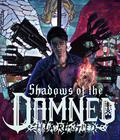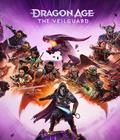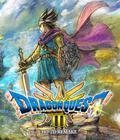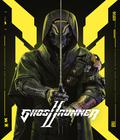Ghostrunner had all of the tools to be appealing — a dystopian cyberpunk future, tricky parkour, and cybernetic ninjas with cool swords — and used them effectively to create a tight action game that demanded near-perfection from the player and doled out satisfaction when those conditions were met. A sequel seemed inevitable, even if it didn't make narrative sense given the events at the conclusion of the first game.
Ghostrunner II doesn't bother to explain why the cyborg ninja Jack has returned, and while this may leave lore-hungry players unsatisfied, everyone else will brush that under the rug and accept the story at face value. One year after the events of the first game, you work as an agent for the new government. While everything is still being worked out between the present parties, a new threat has emerged from a group of cybernetic ninjas that seems hellbent on resurrecting the former leader that you killed a year ago. Naturally, you're the only one with the power to stop this from happening, but the fight isn't restricted to the tower this time around.
The story in the first game was fine, and while the same could be said for this title, you care more about it since the characters aren't just voices in your earpiece. Between levels, you get to roam around your base, and although you'll make a beeline for the upgrade station to beef up your attack and movement stats, you'll also be able to talk to various allies. Their dialogue doesn't suddenly transform the narrative into a masterpiece of storytelling, and their personalities aren't that deep, but their presence and words do just enough to make you care about them, even if only for a little while.
The core gameplay mechanics remain intact. Ghostrunner II is a fast-paced, hack-and-slash title shown from a first-person perspective. As a ninja, you have all of the parkour that you can handle, from wall-running to pole-jumping or using a grappling hook to latch on to faraway surfaces. You can also use some floating bots as extra platforms. You can do a mid-air dodge, and while that is mostly meant to be a defensive move, you can use it to give yourself a tiny bit of jumping distance if you're leaping from an air vent. You have a variety of weapons at your disposal, but you'll mainly use your sword to cut up enemies. The game takes a page from the likes of The Hong Kong Massacre and Hotline Miami, as everyone can die from one hit, no matter what weapon is being used. It creates brutally fast scenes of carnage, but it also works against you as you can also go down in one hit. Luckily, the game has infinite lives and a fast respawn time; even though solving some puzzles and action set pieces can be tricky and demand some high levels of dexterity, you can immediately jump back into the fray with little to no backtracking. The only time the one-hit rule gets broken is when you're up against bosses. Even though you can still die with one bad hit, there are enough checkpoints during a boss fight that you aren't always starting the battle from the beginning.
The additions and tweaks made to the old formula are all for the better. Shurikens are infinite, but you will have to deal with a cooldown so you aren't spamming the area. They also have the ability to stun bigger enemies to give yourself a grapple point, which can make for some cool attack sequences. You also have a new stash of weapons at your disposal, like an energy beam being emitted from your palm or the chance to go invisible for a short while. The one thing you'll really be grateful for is the ability to perform a basic block. Like the shurikens and other special moves, it isn't infinite and is governed by a stamina system, but it remains effective and gives you a chance to be more defensive if your parry and dodge skills aren't great. This opens up the game, as you don't have to master the timings to execute the perfect parry or projectile reflect.
These are all perfect for fighting in cyberspace and the tower, but things really change once you find the motorcycle, which the game has been hyping in its marketing. For the most part, using the bike means going really fast through some narrow spaces, but you'll occasionally ride on walls and ceilings. It makes for sessions where you can get disoriented, but it looks awesome, and there are enough sections to keep things exciting without feeling tired. Similar to some of the jumping sections, you'll have a few instances where your dexterity will be put to the test, as you'll have to hit switches at high speeds to bring up bridges or turn off laser gates. In short, it's an awesome addition that makes the game sing.
The motorcycle leads you to the outside of the tower, which is a complete desert wasteland filled with ruins of the old civilization. The gameplay changes, as the levels are more open than what you'd find in the tower, but otherwise, you're still hacking away at enemies and artfully dodging their attacks while occasionally dealing with some nasty bosses. You obtain a wingsuit, but it appears fairly late in the game and doesn't feel as cool to use as the motorcycle, which you'll use often to traverse the expanse. Your motorcycle also can be used as a weapon to barrel through some easy enemies, and it can be used as a grapple point, allowing you to pull off some cool tricks that sometimes look better than what you could in the tower on foot.
The inclusion of the desert wasteland is a nice touch on paper, and while the implementation of Ghostrunner's core mechanics is done fairly well, the pacing takes a hit. The wide-open areas for driving are nice enough, but having to get off the bike often to open a door impedes upon that. The same can be said for the action sections, which feel like they're spread out a little too far when compared to the opening half, which is set in the more claustrophobic tower. Changes like this don't significantly drag down the game, but it takes enough getting used to that they can be initially off-putting.
There are a few other issues that hold back the game a bit. The first has to do with the physics sometimes flaking out. Sometimes you'll use your grappling hook to swing to the next point or wall and be just fine. Other times, you'll use the same tools and movement and not get the distance you need. The quick reloads mitigate this, but it's still annoying to see this inconsistency. The other issue, which is also inconsistent, has to do with sequence triggers breaking. One early section required you to kill everything present to unlock a door, but nothing happened when you did this, even after a level restart. However, completely rebooting the game activated the trigger once the minions had died without having to include the floating droids in the carnage. Again, it's inconsistent, as another run on a different device didn't trigger this issue, but it is something to note.
The overall presentation matches up with the first game quite nicely, so Ghostrunner II remains a good showpiece. The neon-soaked environment of Dharma Tower still looks excellent, even if the previous game's ray tracing is nowhere to be found. The desert wastelands also look good, even if it's naturally glum. Character designs and animation are well done, and the frame rate is locked at a high level with little to no dips seen, but the game does sport all of the different upscaling methods if needed. The sound is very pleasing, from the techno-infused soundtrack to the good voice work. Each sound effect that plays is satisfying.
For those on the Steam Deck, the game pushes the system hard but still performs quite well. The settings are a mix of Low and Epic on various categories, with the end result being a mixed picture. Billboards and almost any other objects that are located a good distance from the camera will be blurry beyond recognition. Finer elements like hair will appear very dithered, and some elements appear to have flicker, but anything closer to you looks great. Exceptg for a few instances where you load into a new place, the frame rate hits 60fps easily and stays there, no matter what else is going on. The battery life is where the game takes the hit, as the original Steam Deck clocks in an average of two hours when running the game, but you can mess with a few of the options to squeeze more time out of the device without having to drop the frame rate.
There is one issue we did see that was perplexing, and that was an issue having to do with cloud save support. For some reason, the game was unresponsive on the Deck when trying to use the save file to continue progress from the desktop. We had to start up a new game to test out the Steam Deck's performance, but it somehow retained some of the abilities we had received from later stages, despite the game not recognizing that we haven't yet reached the stage where those upgrades would appear. Like the progression issue mentioned earlier, it might be inconsistent between players, but it is worth mentioning in case you were planning on going between Steam Deck and the desktop (or vice versa).
Ghostrunner II finds itself right on par with the first game. The action remains razor-sharp in the beginning, with tight movement and combat that feels rewarding when you master it. The tweaks to existing mechanics and the addition of new moves keep things from devolving into being just "more of the same" when compared to the first title. The more open areas of the desert wasteland feel too freeing, and the various inconsistent issues put a damper on the game when players are experienced. Overall, Ghostrunner II is satisfying for those who can get a thrill from quick bursts of well-executed playthroughs.
Score: 8.0/10
More articles about Ghostrunner 2










 Ghostrunner 2 is a first-person cyberpunk action video game set in a grim, dystopian future.
Ghostrunner 2 is a first-person cyberpunk action video game set in a grim, dystopian future.
























